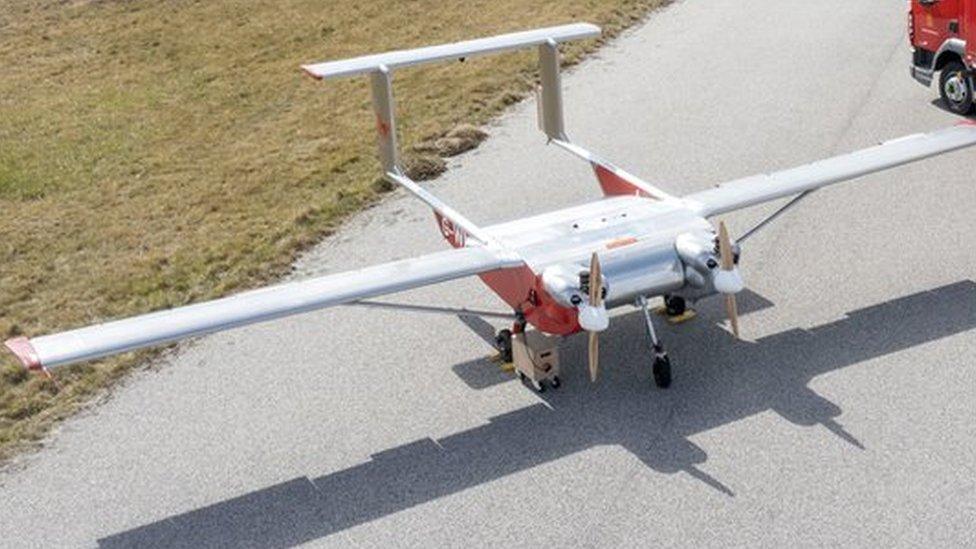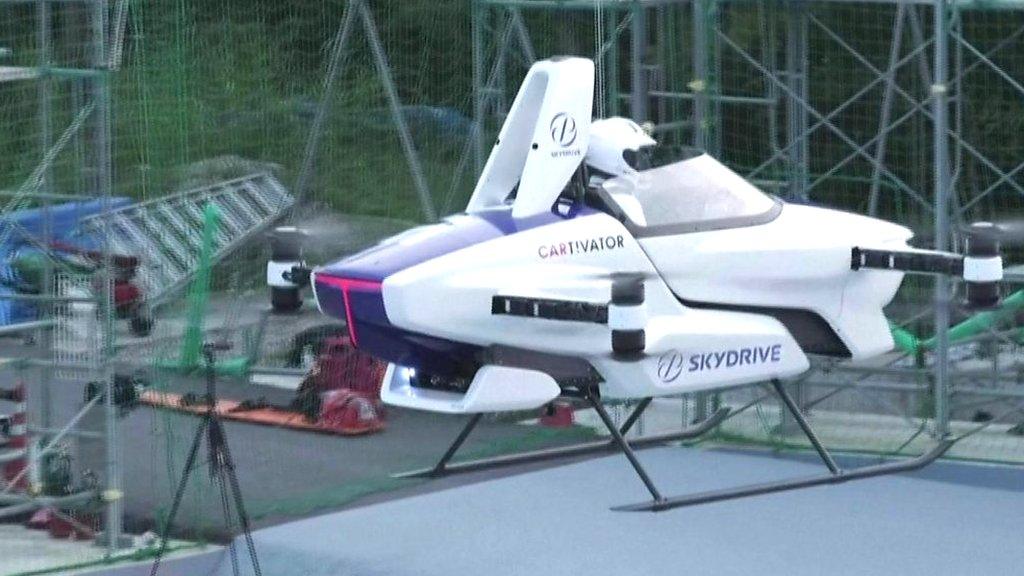Electric flying cars: Alauda Airspeeder Mk3 takes first unmanned test flights
- Published
- comments

Step aside Formula One, THIS is the future of car racing!
We've all heard of electric cars but have you heard of electric FLYING race cars?! Well, you have now!
Say hello to the Alauda Airspeeder Mk3, a four-metre-long 'multicopter' which looks a bit like a massive drone.
The flying car, which was built by Alauda Aeronautics, has taken its first unmanned test flights in the South Australian desert.
Plans are now underway for a series of electric flying car races later this year!
Alauda Airspeeder Mk3: What is it?

The flying race car weighs 130kg and is incredibly powerful. The vehicle can turn with extraordinary speed when compared to a traditional fixed wing aircraft or helicopter.
It features lidar and radar systems that work across different vehicles to avoid mid-air collisions.
Lidar stands for Light Detection and Ranging and uses light to measure distances between objects and their speeds.
Radar stands for Radio Detection and Ranging and uses radio waves to measure distances between objects and their speeds.
Matthew Pearson, the founder of Alauda Aeronautics said:"Basically, the pilot has complete freedom … but we can create a virtual forcefield between the aircraft in the air, even at really high speeds."
The vehicle is powered by a lithium polymer battery with a battery life of about 15 minutes of flying.
Airspeeder EXA: How will electric flying car races work?

It might sound like the plot of a sci-fi film, but a flying race series is being designed which will see up to 10 Airspeeder's take flight.
The race series, named Airspeeder EXA, will be similar to Formula One, but this time the race track will be in the sky!
Pearson said he hoped the race series would improve the safety of the technology and "accelerate clean air mobility for our cities".
Three races will take place later in 2021, in locations yet to be announced.
Depending on the terrain, the vehicles will fly at speeds between 150 to 250km per hour, that's pretty fast! Formula One cars can reach top speeds of up to 360km per hour.

Each race will last 45 minutes, and two breaks will be needed for battery swaps, a process that takes about 20 seconds each time.
The aircraft has space for a pilot but is currently being controlled by a "telerobotic avatar".
"We've got a robot in the cockpit, linked up to a pilot on the ground. When the pilot turns their head, the robot turns their head," Pearson said.
If uncrewed races can happen safely, the team hopes to then move to physically piloted races.
What else is being developed?
WATCH: Could this flying car being developed in Japan be the future of travel? (Sept, 2020)
Flying cars and taxis have been in development for several years.
Drones are already being used to deliver parcels and developers in Japan have been working on a flying car that they hope will become a part of everyday life in the near future.
Dr Simona Mihaita, head of the Future Mobility Lab at the University of Technology, Sydney, said: "In the near future, whether we like it or not... it's possible that we will be flying to work instead of driving to work."
Although this might take some time as "you want to be able to charge these vehicles on demand anywhere," she said.
"Unfortunately we are very far away from that, because our current electric infrastructure needs a lot of upgrading."
Would you watch a flying car race? Let us know in the comments below.
- Published13 May 2021

- Published2 May 2019

- Published10 September 2020

